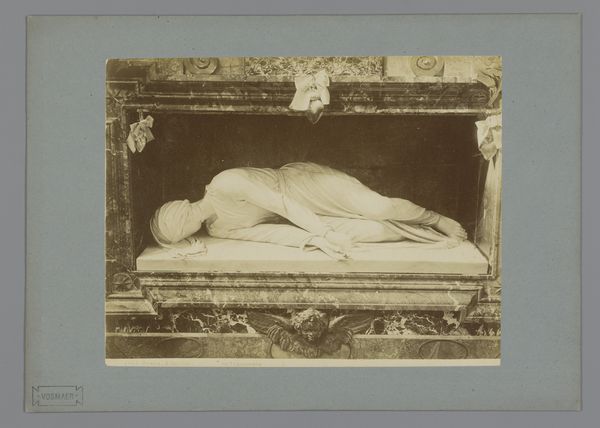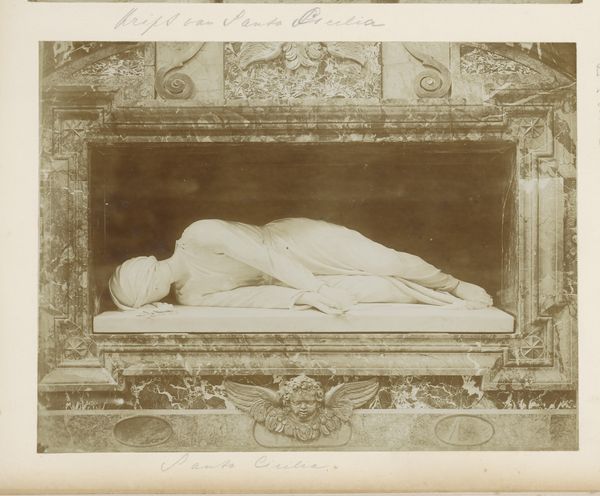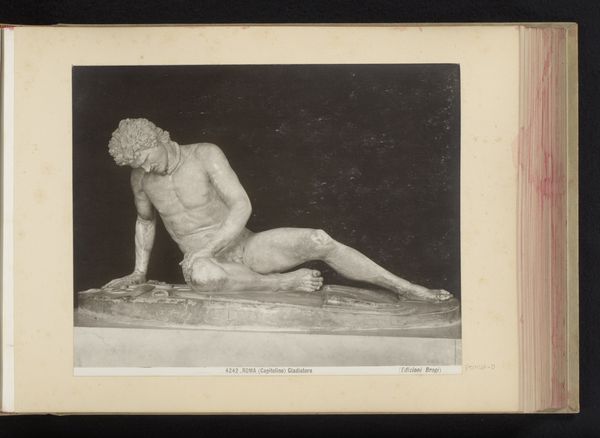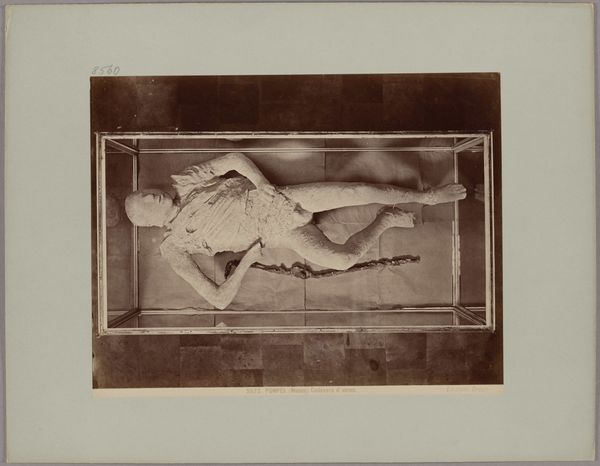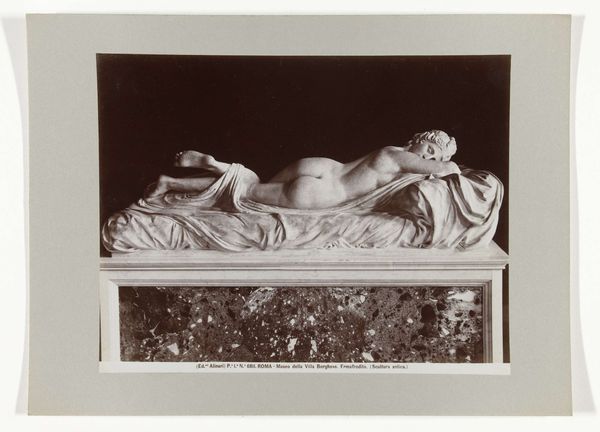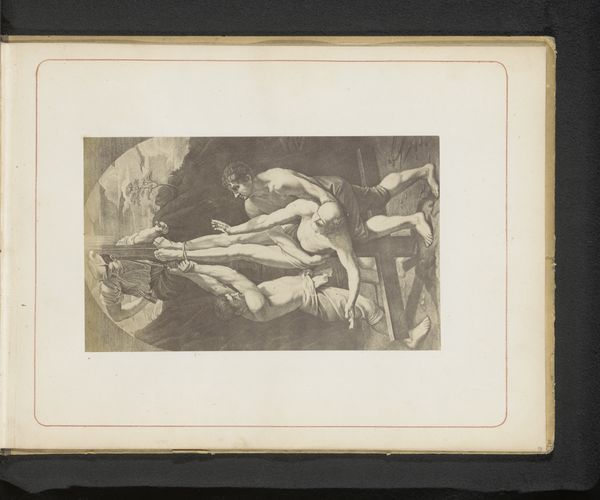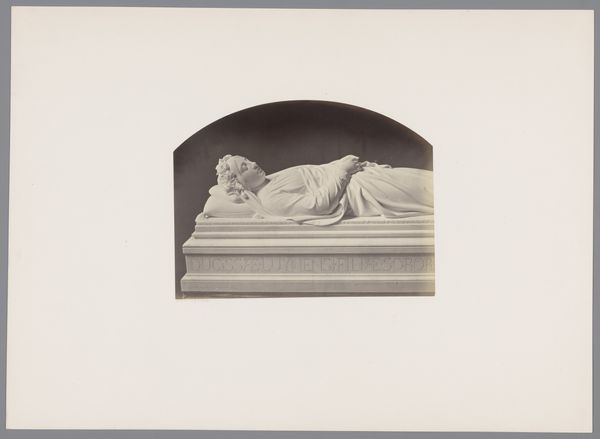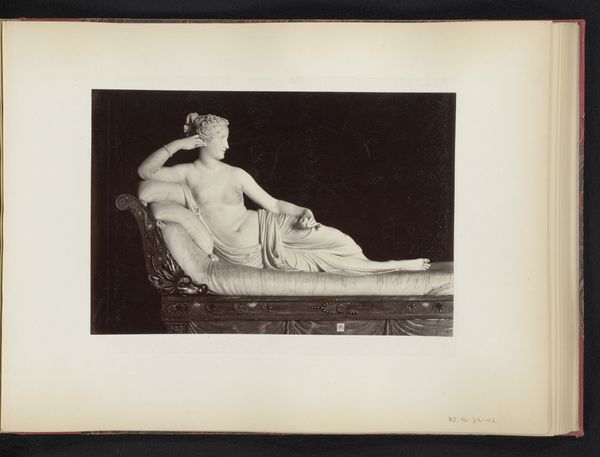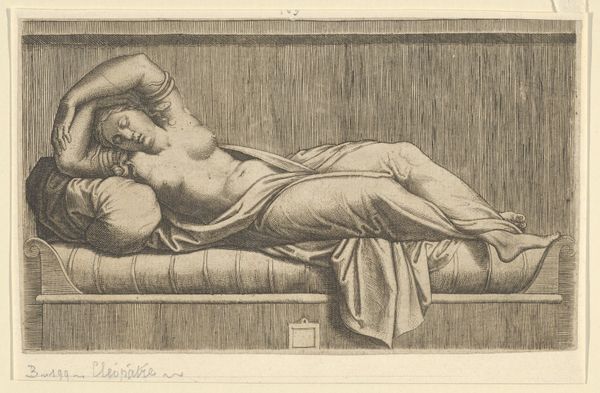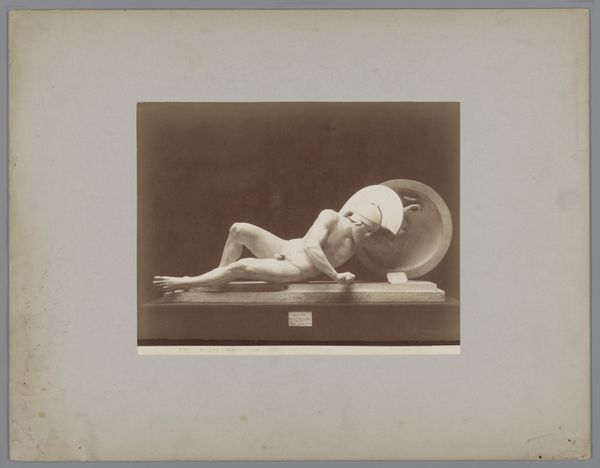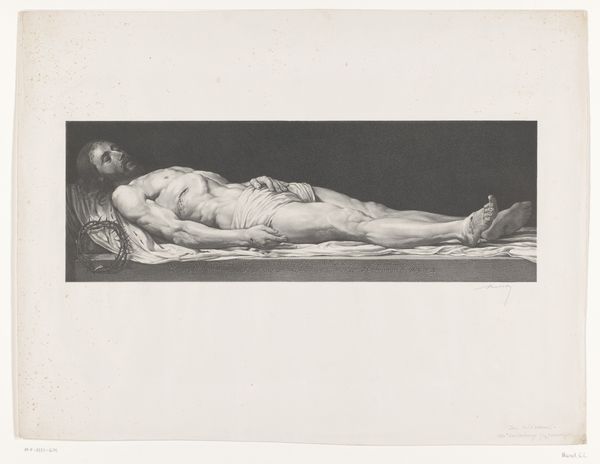
Sculptuur van de slapende Hermaphroditus in het Museo Nazionale Romano before 1907
0:00
0:00
photography, sculpture
#
portrait
#
sculpture
#
photography
#
ancient-mediterranean
#
sculpture
#
erotic-art
Dimensions: height 198 mm, width 249 mm
Copyright: Rijks Museum: Open Domain
Editor: So, this photograph captures a sculpture, the "Sleeping Hermaphroditus," housed in the Museo Nazionale Romano, and it appears to date back to before 1907, the image is credited to Edizione Brogi. The figure's languid pose evokes such a serene yet subtly erotic mood. How do we unpack the enduring fascination with this sculpture through a historical lens? Curator: That's a great question. To truly understand this work, we need to consider its place within a larger framework of the appropriation and reinterpretation of ancient art through history. It isn't simply a depiction of a mythological figure. Editor: Appropriation in what sense? Curator: Well, this sculpture itself is a Roman copy of a Hellenistic original. Then, we have this photograph, taken in the late 19th or early 20th century. The act of photographing, displaying, and marketing sculptures like this served particular social and cultural purposes. How do you think its presentation influenced public perception at the time? Editor: It strikes me that the presentation elevates it to high art but the choice of subject introduces questions surrounding beauty and the forbidden. Curator: Precisely. Think about the gaze of the viewer, how it might be directed, even manipulated. Early photography of sculpture like this was also about claiming a lineage with classical ideals, but selectively so. The erotic elements were both highlighted and concealed. Consider who had access to this image, where it was displayed, and what messages that conveyed about the politics of beauty and the role of classical art in shaping social norms. Editor: It’s fascinating to consider the layers of interpretation at play – from the original Greek sculpture, to the Roman copy, and then to this photograph. Each translation is imbued with the values of the culture producing it. I think that's a great takeaway: that artworks often exist to be endlessly re-contextualized by society. Curator: Agreed, and that continuing re-contextualization says as much about us as it does about the past.
Comments
No comments
Be the first to comment and join the conversation on the ultimate creative platform.
